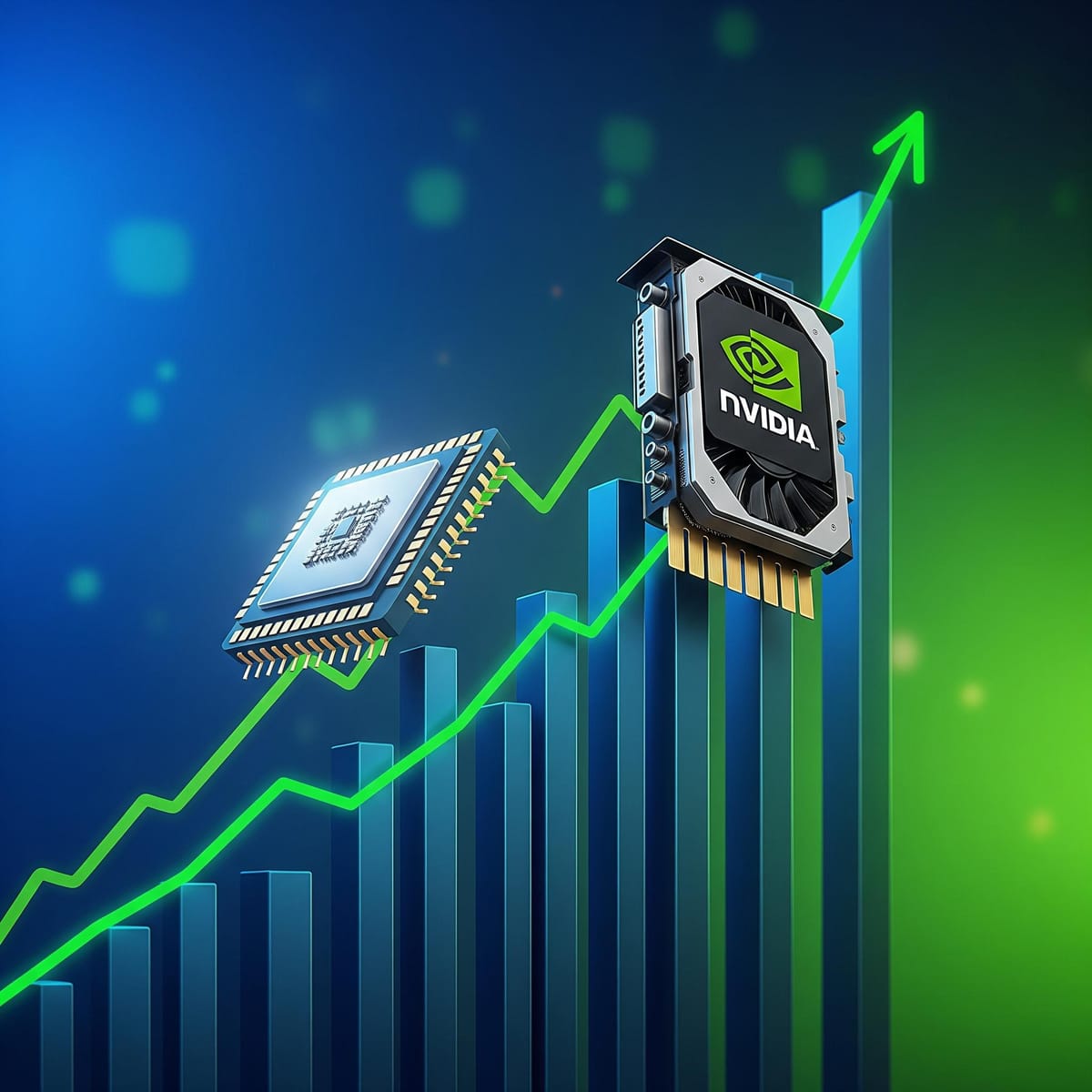Nvidia’s $4 Trillion Milestone Redefines Market Power and the AI Economy

Nvidia’s (NASDAQ: NVDA) rise to a $4 trillion market capitalization marks a defining moment in both financial markets and the artificial intelligence (AI) revolution. As of July 9, 2025, the chipmaker became the first public company to ever cross the $4 trillion threshold, reflecting extraordinary confidence in AI as a foundational pillar of 21st-century industry.1 From generative models to data center infrastructure, Nvidia’s technology stack has become integral to nearly every corner of the modern economy. The company's gains come amid surging institutional demand, easing monetary policy expectations, and resurgent tech indices, with the Nasdaq Composite reaching an all-time high alongside Nvidia’s record.
Fueled by its dominant position in high-performance computing and a first-mover advantage in AI semiconductors, Nvidia’s trajectory is not merely a product of investor enthusiasm. It reflects a larger capital shift toward AI-native infrastructure, marking a realignment of corporate tech spend and industry focus. Having added over $3 trillion in market value since mid-2023, Nvidia’s acceleration has outpaced even the historic growth curves of Apple and Microsoft. At 7.3% of the S&P 500, Nvidia is now the single largest component of the index and worth more than the entire stock markets of Canada or the United Kingdom.
AI Hardware at the Heart of Industrial Transformation
Nvidia’s historic valuation is underpinned by the company’s architecture-level control of the AI supply chain. Its latest chips power virtually every large language model, inference engine, and AI-native data center run by the likes of Amazon, Microsoft, and Alphabet. In Q1 alone, Nvidia reported $44.1 billion in revenue, a 69% year-over-year increase.2 Its Q2 outlook projects a further rise to $45 billion, reinforcing investor confidence in sustained demand growth despite broader macro uncertainties.
The importance of this cannot be overstated. Nvidia’s graphics processing units (GPUs) are not merely fast processors; they are core enablers of AI scalability, throughput, and cost efficiency. As AI training and inference become embedded in sectors from healthcare diagnostics to logistics optimization, Nvidia has effectively become the platform company for global computational infrastructure. The company’s rebound, up 74% since April’s market jitters, signals renewed institutional alignment around AI as a growth engine even amid geopolitics, tariff risks, and competitive headwinds.
Market Context and Competitive Landscape
This milestone also comes at a time of broader equity market resilience. Optimism around global trade negotiations, dovish signals from the Federal Reserve, and robust earnings from key AI players have buoyed investor sentiment. The Fed’s June meeting minutes, released the same day, suggested multiple rate cuts are likely in 2025, further stoking appetite for growth stocks.
Meanwhile, competitors such as AMD and emerging startups are racing to develop lower-cost AI chips, aiming to take market share from Nvidia’s top-tier offerings. At a 12-month forward price-to-earnings (P/E) ratio of 32, below its three-year average of 37, Nvidia still appears attractively valued relative to its earnings power.3 Its valuation, though massive, is increasingly viewed as sustainable given the scale of its TAM (total addressable market) across verticals.
ArcStone’s View
Nvidia’s $4 trillion milestone represents a structural re-rating of the semiconductor industry and a redefinition of market leadership in the digital age. With hardware now as central to innovation as software once was, Nvidia’s role as the linchpin of the AI ecosystem positions it as essential infrastructure, not just a vendor.
This transition holds deep implications for industries well beyond tech. Energy providers, like AES, are already pivoting to power AI-centric data centers. Advertising conglomerates, automotive manufacturers, and even biotech firms are being reshaped by Nvidia-powered models and platforms. As AI moves from capability to necessity, Nvidia’s reach into the core operations of global business will only deepen.
For investors, this moment marks a new era in asset allocation, one where compute capacity, AI enablement, and semiconductor architecture drive enterprise value creation. Growth stocks, particularly those underpinning structural technological shifts, remain compelling amid these long-term tailwinds. At ArcStone, where we work closely with high-growth companies across transformative sectors, Nvidia’s ascent further validates the investment thesis behind innovation-led enterprise value. While volatility and competition remain, the roadmap is clear: Nvidia is no longer just a leader in chips. It is the engine behind the AI economy.





